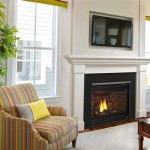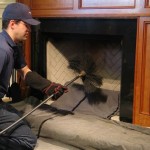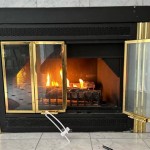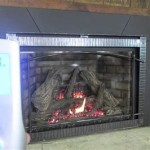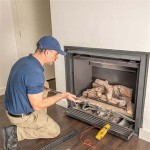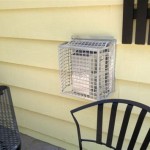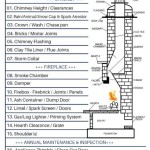Fireplaces With Tile Fronts: A Comprehensive Guide
Fireplaces have long been a focal point in homes, providing warmth, ambiance, and a gathering place for families and friends. While the basic function of a fireplace remains consistent, its aesthetic design can be highly adaptable, reflecting evolving architectural styles and personal preferences. One popular design element is the use of tile fronts, which offers a wide array of options for customization, durability, and overall visual appeal. This article provides a comprehensive overview of fireplaces with tile fronts, exploring their benefits, design considerations, installation aspects, and maintenance requirements.
Aesthetic Versatility and Design Options
The primary advantage of using tile fronts for fireplaces lies in their remarkable aesthetic versatility. Tile is available in a virtually limitless range of colors, patterns, sizes, and textures, enabling homeowners to achieve a highly personalized look that complements their existing décor. From classic subway tiles to intricate mosaic designs, the possibilities are extensive. Consider the following design considerations:
Tile Material: The choice of tile material significantly impacts the overall look and feel of the fireplace. Ceramic tile is a common and affordable option, offering a wide variety of colors and finishes. Porcelain tile, known for its durability and water resistance, is suitable for both indoor and outdoor applications. Natural stone tiles, such as marble, granite, and slate, impart a sense of luxury and sophistication, although they may require more maintenance. Glass tiles offer a sleek and modern aesthetic, while terracotta tiles provide a rustic and earthy touch.
Tile Style: The style of the tile should align with the overall architectural style of the home. For traditional homes, classic patterns like herringbone, basketweave, and subway tiles are often preferred. Modern homes may benefit from larger format tiles, geometric patterns, or minimalist designs. Consider incorporating decorative accents, such as accent tiles, borders, or medallions, to add visual interest.
Color Palette: The color of the tile should complement the surrounding walls, flooring, and furniture. Neutral colors, such as white, beige, and gray, provide a timeless and versatile backdrop. Bold colors can create a statement piece, while subtle variations in tone can add depth and dimension. Consider the use of contrasting grout colors to highlight the tile pattern.
Texture and Dimension: Incorporating textured or three-dimensional tiles can add visual interest and tactile appeal to the fireplace. Textured tiles can mimic the look of natural stone or wood, while three-dimensional tiles create a sculptural effect. Consider the use of matte, glossy, or textured finishes to achieve the desired aesthetic.
Size and Scale: The size and scale of the tile should be proportionate to the size of the fireplace and the surrounding space. Larger format tiles can create a more modern and streamlined look, while smaller tiles can add detail and intricacy. Consider the use of different tile sizes to create visual interest and balance.
Grout Selection: Grout is an often-overlooked element that significantly contributes to the overall appearance of a tiled fireplace. Epoxy grout offers superior stain resistance compared to cement-based grout, making it a practical choice for high-use areas like fireplaces. Color selection is crucial; a grout color that contrasts sharply with the tile can accentuate the pattern, while a grout color that closely matches the tile creates a more seamless look.
Layout and Pattern: The layout and pattern of the tiles play a significant role in the visual impact of the fireplace. Classic patterns like subway, herringbone, and basketweave provide timeless appeal. For a more modern aesthetic, consider linear layouts or large-format tiles. The pattern should complement the overall design style of the room and enhance the fireplace's focal point status.
Durability, Maintenance and Performance
Beyond aesthetics, tile fronts offer practical benefits in terms of durability, maintenance, and performance. Tile is a non-combustible material, making it a safe choice for fireplaces. It is also resistant to heat, moisture, and stains, ensuring that the fireplace front remains in good condition for years to come. The appropriate selection and installation of tile can significantly impact the longevity and performance of a fireplace.
Heat Resistance: Tile is highly resistant to heat, ensuring that the fireplace front remains intact even under high temperatures. Carefully select tiles specifically rated for fireplace use to ensure they can withstand the direct heat from the firebox. Certain natural stones may be more prone to cracking under intense heat, so it's critical to consult with a professional before selecting materials.
Ease of Cleaning: Tile surfaces are generally easy to clean and maintain. Regular cleaning with a mild detergent and water is usually sufficient to remove dust and dirt. Avoid using abrasive cleaners or scouring pads, as these can damage the tile surface. For stubborn stains, specialized tile cleaners may be necessary.
Moisture Resistance: Porcelain and glass tiles are particularly resistant to moisture, making them suitable for fireplaces in humid environments. Ensure that the grout is properly sealed to prevent water from seeping behind the tiles. Regularly inspect the grout for cracks or damage and repair as needed.
Longevity: When properly installed and maintained, tile fronts can last for decades, providing a durable and attractive finish. The lifespan of the tile will depend on the quality of the materials, the installation techniques, and the level of maintenance. Investing in high-quality materials and professional installation will ensure the long-term performance of the fireplace.
Fire Safety: As mentioned, tile is a non-combustible material, which provides an added layer of safety. However, it is crucial to ensure that the fireplace is properly installed and maintained to prevent fire hazards. Regularly inspect the chimney and flue for obstructions and ensure that the fireplace is properly vented to prevent carbon monoxide buildup.
Insulation Properties: While tile itself doesn't provide substantial insulation, when installed over a proper substrate it can contribute to the overall energy efficiency of the fireplace. A well-insulated fireplace can help to reduce heat loss and improve the overall comfort of the home. Consider incorporating insulation materials behind the tile to enhance its thermal performance.
Sealing and Grout Maintenance: Grout lines are susceptible to staining and discoloration. Applying a grout sealer after installation and periodically thereafter helps to protect the grout from moisture, stains, and mildew. Regular cleaning with a grout brush and appropriate cleaning solutions can maintain the appearance of the grout and prevent the buildup of dirt and grime.
Installation Considerations and Best Practices
Proper installation is crucial to the success of any tile fireplace project. A poorly installed tile front can result in cracks, loose tiles, and water damage. It is generally recommended to hire a qualified tile installer to ensure that the job is done correctly. This section outlines key installation considerations and best practices for creating a durable and visually appealing tiled fireplace.
Substrate Preparation: The substrate, or the surface onto which the tile is installed, must be clean, level, and structurally sound. Remove any existing paint, wallpaper, or debris before proceeding with the installation. Repair any cracks or imperfections in the substrate to ensure a smooth and even surface. Consider using a cement backer board to provide a stable and water-resistant base for the tile.
Mortar and Adhesive: Select a mortar or adhesive that is specifically designed for use with tile fireplaces. Ensure that the product is heat-resistant and capable of withstanding the high temperatures generated by the fireplace. Follow the manufacturer's instructions for mixing and applying the mortar. Use a notched trowel to create ridges in the mortar bed, ensuring that the tile is properly adhered to the substrate.
Tile Layout and Cutting: Before installing the tile, carefully plan the layout to ensure that the pattern is symmetrical and visually appealing. Use a tile cutter or wet saw to cut the tiles to the appropriate size and shape. Be precise when making cuts to ensure a clean and professional finish.
Grouting and Sealing: After the tile has been installed, allow the mortar to cure completely before grouting. Apply the grout evenly to fill the spaces between the tiles. Remove any excess grout with a damp sponge. After the grout has cured, apply a grout sealer to protect it from moisture and stains.
Expansion Joints: Incorporating expansion joints is essential to accommodate the natural expansion and contraction of building materials caused by temperature fluctuations. These joints prevent cracking and ensure the long-term stability of the tiled surface. Consult with a professional to determine the appropriate placement and type of expansion joints for your specific fireplace design.
Professional Installation: While DIY tile installation is possible, hiring a professional tile installer is highly recommended, especially for complex projects. Experienced installers have the knowledge, skills, and tools to ensure that the job is done correctly. They can also provide valuable advice on tile selection, layout, and maintenance.
Code Compliance: Ensure that the fireplace and tile installation comply with all local building codes and regulations. This may include requirements for fire resistance, ventilation, and clearances from combustible materials. Obtain the necessary permits before starting the project to avoid any potential issues.

Fireplace Tile Ideas Designs To Inspire You

Corner Lot Modern Farmhouse Rustic Fireplace Tile Remodel

Our Favorite Fireplace Design Ideas The Tile Blog

Hottest Fireplace Trend Tile Flooring

Remodeling A Fireplace With Tile
Trend Watch Tile Fireplace Surrounds

Diy Projects Tiling A Fireplace Like Pro Rubi Blog Usa

Remodeling A Fireplace With Tile

Farmhouse Fireplace Tile Ideas 11 Ways To Enhance A Fiery Focal Point Atlas Ceramics
/102661017-6a23c040b71843379188b96b21ac1a08.jpg?strip=all)
How To Tile A Fireplace
Related Posts

